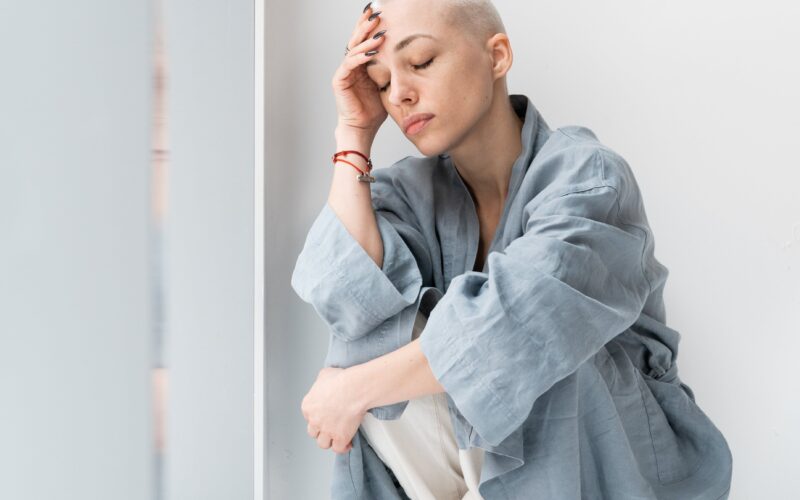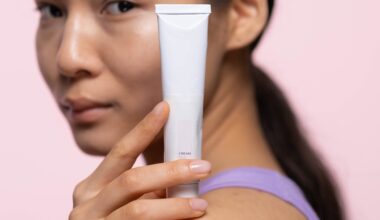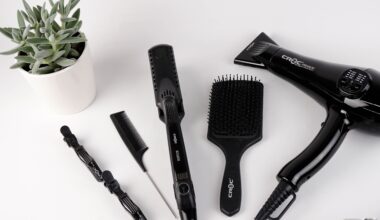Introduction
Ah, the timeless charm of straight, sleek hair! It’s a look that’s been adored globally, transcending generations and geographic boundaries. The allure of perfectly straightened hair has led to a burgeoning industry of hair straightening treatments. But as these treatments gain popularity, a cloud of concern looms regarding the potential health implications involved. Among the discussions is a frightening word — cancer.
The mention of cancer risk linked to hair straightening can make anyone shudder. Yet, is this a real threat or merely a myth wrapped in fear? In this comprehensive guide, we will delve into the science behind hair straightening chemicals, explore the alleged connection between hair straightening and cancer, debunk some common myths surrounding the topic, and equip you with the knowledge to make informed decisions concerning your beauty treatments.
The Chemistry of Hair Straightening
Understanding the structural intricacies of hair is the first step to grasping how straightening treatments work. Hair, at its core, is composed of a protein called keratin, arranged in a complex structure. These keratin molecules are held together by bonds, which dictate the hair’s natural shape – be it curly, wavy, or straight.
Understanding the Hair Structure
- Cuticle: This is the hair’s outermost layer, a protective shield made of overlapping cells. It plays a crucial role in maintaining hair health and shine.
- Cortex: Beneath the cuticle lies the cortex, which constitutes the hair’s bulk and houses the melanin that gives hair its color. The bonds we aim to alter during straightening are situated here.
- Medulla: This is the innermost layer, but not all hair types possess it. Its role in hair science and structure is still under research.
The Role of Formaldehyde and Other Key Chemicals
Hair straightening treatments, especially Brazilian hair straightening (often known as keratin treatments), contain chemicals that can break and reform the bonds in the cortex. Among these chemicals, formaldehyde stands out. Why?
- Formaldehyde: Known for its preservative and disinfecting qualities, it’s the key player in many hair straightening treatments. When heated, it helps in breaking down the bonds and resetting them in a straight pattern. However, it’s also a chemical that has been at the center of many health debates, primarily due to its classification as a known carcinogen by many health organizations.
- Other Chemicals: While formaldehyde gets the most attention, it’s essential to note that other chemicals can also pose potential risks. Some treatments might use methylene glycol, which releases formaldehyde when heated, or other aldehydes. It’s always recommended to read the ingredient list and understand what you’re exposing your hair and scalp to.
How These Chemicals Interact with Our Hair
Upon application and heating (usually with a flat iron), the formaldehyde or its derivatives break the hair’s natural bonds. After the hair is straightened, the chemicals then reform these bonds, locking the hair in this new straight shape. The result? Silky straight hair that can last for months. However, the beauty of this transformation is not without potential health implications.
The Alarming Link: Hair Straightening and Cancer
The beauty of straight, glossy locks can sometimes obscure the deeper concerns associated with the chemicals in hair straightening treatments. One of the most pressing apprehensions relates to the potential cancer risks. Here’s what the research suggests:
Formaldehyde: A Known Carcinogen
- Formaldehyde has been classified as a known human carcinogen by various health agencies, including the International Agency for Research on Cancer (IARC) and the National Toxicology Program.
- Prolonged exposure to formaldehyde fumes can lead to serious health complications, including respiratory issues and cancer. In the hair treatment context, both the client and the hairstylist are exposed to these fumes, especially when the treatment involves heating the hair, which releases the fumes.
Research Findings: Direct Links and Correlational Evidence
- Studies have shown that hairdressers and barbers are at a slightly increased risk of bladder and other cancers compared to the general population. This is believed to be due to their prolonged exposure to hair dyes and straightening treatments that contain formaldehyde and other potentially harmful chemicals.
- A study from the National Institute of Health (NIH) indicated that women who use hair dyes and chemical straighteners might have an increased risk of breast cancer. While the findings are still being debated, and more research is needed, the study does raise concerns.
Exposure Frequency and Its Implications
- The frequency of exposure is crucial. Occasional users might face less risk than those who frequently undergo treatments or stylists who administer these treatments regularly.
- Proper ventilation in salons can reduce the concentration of formaldehyde fumes, minimizing the risk to some extent. However, the best approach is to be informed and cautious.
Occupational Risks: Hairdressers and Frequent Salon-Goers
- Hair professionals are at the frontline, with consistent exposure to formaldehyde, especially if they perform multiple treatments in a day. Without proper precautions, this consistent exposure can lead to chronic health issues.
- Regular salon-goers, especially those loyal to hair straightening treatments, should also be wary. While the occasional treatment might pose minimal risk, frequent treatments amplify exposure levels.
Debunking Myths Around Hair Straightening
In an age where information is at our fingertips, it’s also an era where misinformation spreads like wildfire. The link between hair straightening and cancer is no stranger to myths and misconceptions. Let’s bust some of the most common ones:
Myth 1: “All hair straightening treatments are carcinogenic.”
- Reality: Not all hair straightening treatments contain formaldehyde or its derivatives. There are many treatments available that prioritize natural ingredients over chemicals. It’s always recommended to thoroughly read ingredient lists and consult with your hairstylist.
Myth 2: “Occasional treatments pose no health risk.”
- Reality: While the risk is significantly reduced with less frequent treatments, it’s not entirely eliminated. As mentioned earlier, formaldehyde is a known carcinogen, and even one-time exposure can have adverse effects, especially if the salon isn’t well-ventilated.
Myth 3: “Only cheap brands or treatments have harmful chemicals.”
- Reality: The presence of harmful chemicals is not necessarily tied to the price tag. High-end treatments can contain the same chemicals as less expensive ones. It’s less about the cost and more about the ingredients.
Myth 4: “If there’s no immediate reaction, it’s safe.”
- Reality: The absence of an immediate reaction (like skin irritation or eye watering) doesn’t certify a product as safe. Long-term health risks like cancer develop over extended periods and are not always linked to immediate visible reactions.
Armed with the right information, you can make well-informed decisions that prioritize both beauty and health.
Safety First: Precautions and Alternatives
Just because there are concerns associated with certain hair straightening treatments doesn’t mean you have to bid adieu to your dreams of silky, straight hair. With a few precautions and by exploring alternative treatments, you can strike a balance between beauty and health.
Safety Precautions:
- Read the Labels: Always make sure to check the ingredient list of any hair product or treatment. Look out for formaldehyde, methylene glycol, and other aldehydes.
- Ask Your Stylist: Openly discuss your concerns with your hair professional. They can provide insights on the products they use and might even recommend safer alternatives.
- Ventilation is Key: Ensure the salon has proper ventilation. This can significantly reduce the concentration of harmful fumes.
- Limit Frequency: If you’re keen on using treatments that contain formaldehyde or its derivatives, try to limit the frequency of your treatments.
- Protective Equipment: Some salons offer masks to clients during treatments. This can help reduce inhalation of harmful fumes. If your salon doesn’t offer this, consider bringing your own.
Alternative Treatments:
- Formaldehyde-free Straightening: There are hair straightening treatments on the market that don’t use formaldehyde or its derivatives. They might not last as long but can offer a safer alternative.
- Hair Smoothing Serums and Products: If you’re looking to reduce frizz and attain a straighter look without a long-lasting treatment, many products can help you achieve this temporarily.
- Heat Styling with Protection: Using flat irons or hair straighteners can give you the desired straight hair look. Always use a heat protection spray to protect your hair from damage.
- Natural Remedies: Some natural remedies can help in managing curly or frizzy hair. A combination of coconut milk and lemon juice, when applied to the hair, can act as a natural straightener.
- Embrace Your Natural Hair: Of course, one of the best alternatives is to embrace your natural hair texture. With the right products and styling techniques, every hair type can look fabulous!
In conclusion, while there are potential risks associated with certain hair straightening treatments, being informed and cautious can help you navigate the world of beauty treatments safely. Beauty doesn’t have to come at the cost of health. With the right information and choices, you can have the best of both worlds.
In Conclusion: A Balanced Approach to Beauty and Health
Hair has often been described as a woman’s crowning glory. It holds cultural, personal, and even historical significance. In our quest for beauty, it’s essential to ensure that health isn’t left by the wayside. As we’ve seen with the potential links between hair straightening treatments and cancer risks, it’s paramount to be informed and cautious.
- Being Knowledgeable: Understanding the risks and rewards of any treatment is the first step in making a well-informed decision. Dive deep into the research, ask professionals, and be discerning with your sources.
- Choice and Agency: Remember, you always have a choice. Whether you choose to proceed with a treatment, opt for an alternative, or embrace your natural beauty, ensure it’s a decision made with full awareness.
- Professional Consultation: Regularly consult with professionals, be it dermatologists, trichologists, or hairstylists, especially if you frequently indulge in hair treatments. Regular check-ups can preemptively identify any issues.
- Holistic Beauty: True beauty is holistic. It encompasses not just your physical appearance but also your well-being. Prioritize treatments and routines that nourish both your exterior and interior.
The world of beauty is vast and ever-evolving. As trends come and go, and as science and research advance, it’s up to each of us to strike the right balance. In the end, it’s about feeling confident in our choices and knowing we’ve considered not just the mirror’s reflection but also the underlying health and safety implications.
Thank you for journeying with me on this deep dive into hair straightening, its potential risks, and the broader realm of beauty and health. Stay informed, stay beautiful, and most importantly, stay healthy!





